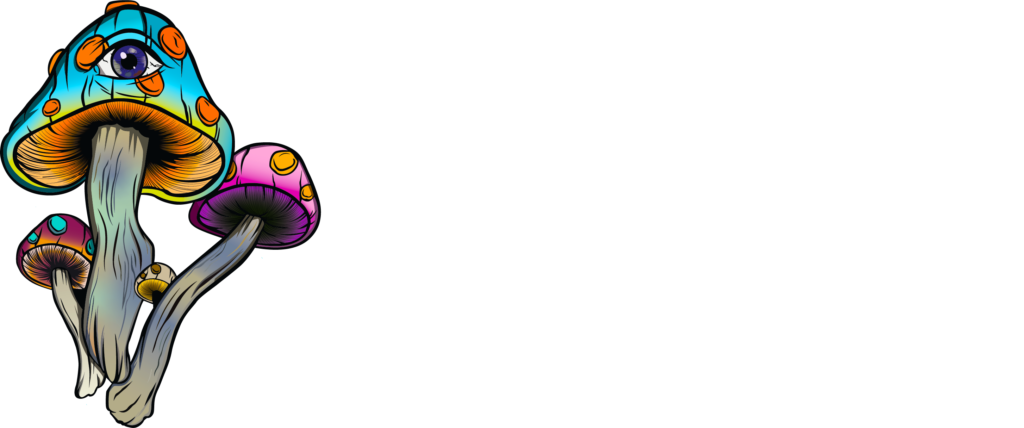Two terms in mushroom cultivation that you should know are spores and spawn. Simply put, they are the first two stages in a life cycle that ends with mushrooms. We’ll discuss their differences, where they fit in the cultivation process, and weigh the pros and cons of using each in a liquid syringe.
What are spores?
Fungi, along with algae, plants, protozoa, and bacteria all produce spores, which are small, usually microscopic, single-celled structures whose only purpose is to spread the organisms’ genetic material to new locations. Spores are released from the mushroom fruit-body and dispersed through the air, water, or by hitching a ride on an animal and can remain dormant for long periods of time, in some cases up to millions of years under the right conditions.
Spores can be thought of as mushroom “seeds,” but they are not the same thing. Plant seeds contain all the genetic material required to grow another plant, so long as the seed finds suitable soil. Fungal spores on the other hand contain half the necessary amount of genetic material to make a new mushroom, so two spores of the same type of fungi must meet and fuse to form a new fungi capable of producing mushrooms.
Fungi growing in the wild are the success stories of a massive roll of dice, with the vast majority of spores never germinating and growing a mushroom fruit-body. Interested in collecting wild spores of your own? Spores may be collected from a spore print, which is a powdery imprint left on a surface by the spores of a mushroom. Spore prints are an important field mark for identifying mushrooms, as their colors can help distinguish between species.
A mushroom releasing spores.
What is spawn?
Sawdust spawn.
Following spore germination, mushroom spawn is the next step in the fungal life cycle prior to mushroom development. Spawn is the commercial term for mycelium colonizing a prepared substrate, such as straw, wood chips, or sawdust, and forms the backbone of all large-scale mushroom growing operations. Over time, physical traits such as growth rate, fruit-body size, yield, and adaptability to different growing conditions have been improved upon by growers, allowing them to simply clone desired spawn for consistent production of a particular variety of mushroom.
At North Spore, all of our spawn varieties are grown from ‘master’ grain spawn bags and are kept on agar petri dishes in our laboratory’s culture bank. In this way, cloning spawn is similar to how people grow apples from grafted wood as opposed to planting apple seeds.
Grafting ensures that a particular set of genetics produce a consistent apple variety, whereas the seeds (and spores from fungi!) are a grab-bag of potentially undesirable parental genetics. Indeed, most of North Spore’s own spawn originated from cloned sections of spawn tissue rather than from wild spores. Speaking of our own spawn, we produce three distinct types of spawn, each with its own particular uses, benefits, and trade-offs.
What is the difference between a spore syringe and a culture syringe?
As your cultivation game advances, you may be tempted to inoculate your own sterile substrates with either a spore or culture syringe. Whether made by yourself or purchased online it is important to know the difference between them. Mushroom mycelium, or spawn, suspended in liquid is called liquid culture and is housed inside a culture syringe. Mushroom spores suspended in sterile water inside of a syringe are called spore syringes. Both can be used to cultivate mushrooms by injecting a portion of the syringe into a sterilized grain bag which colonizes and can then be transferred to sterile substrates such as manure, straw, or sawdust. The difference between the two syringe types is mostly defined by their use cases.
Spore syringes are typically used by those just starting out in cultivation, or by people who want to grow mushrooms that are prohibited by law in their jurisdiction. For example, growers of psilocybin-containing mushrooms often use spore syringes instead of culture syringes because psilocybin mushroom spores do not actually contain any psilocybin until they germinate. North Spore does not sell psilocybin mushroom spores but these products are widely available online under the guise of ‘microscopy use only’.
Why would I use a culture (spawn) syringe instead of a spore syringe?
Culture syringes are used by more advanced cultivators and mushroom growers. They are a more reliable starting point in growing mushrooms as the mycelium is already established within the syringe and will therefore colonize faster than just spores on their own. Culture syringes are also more often single-strain, meaning that the entirety of the spawn within the syringe is from the same strain of mushroom. Spore syringes, on the other hand, often consist of a combination of spores from different strains resulting in undo competition, lower quality yields, and general inconsistency regarding what you actually purchased. This dilemma recalls our earlier discussion regarding spores vs spawn, with spawn being the cloned tissue from a known mushroom and spores being a genetic dice roll of uncertainty.
Whether purchasing a spore or culture syringe, it is a good idea to confirm it was prepared from a single, isolated strain. This knowledge will absolutely save you a headache down the road.
An injection port grain bag being inoculated with a culture syringe.
